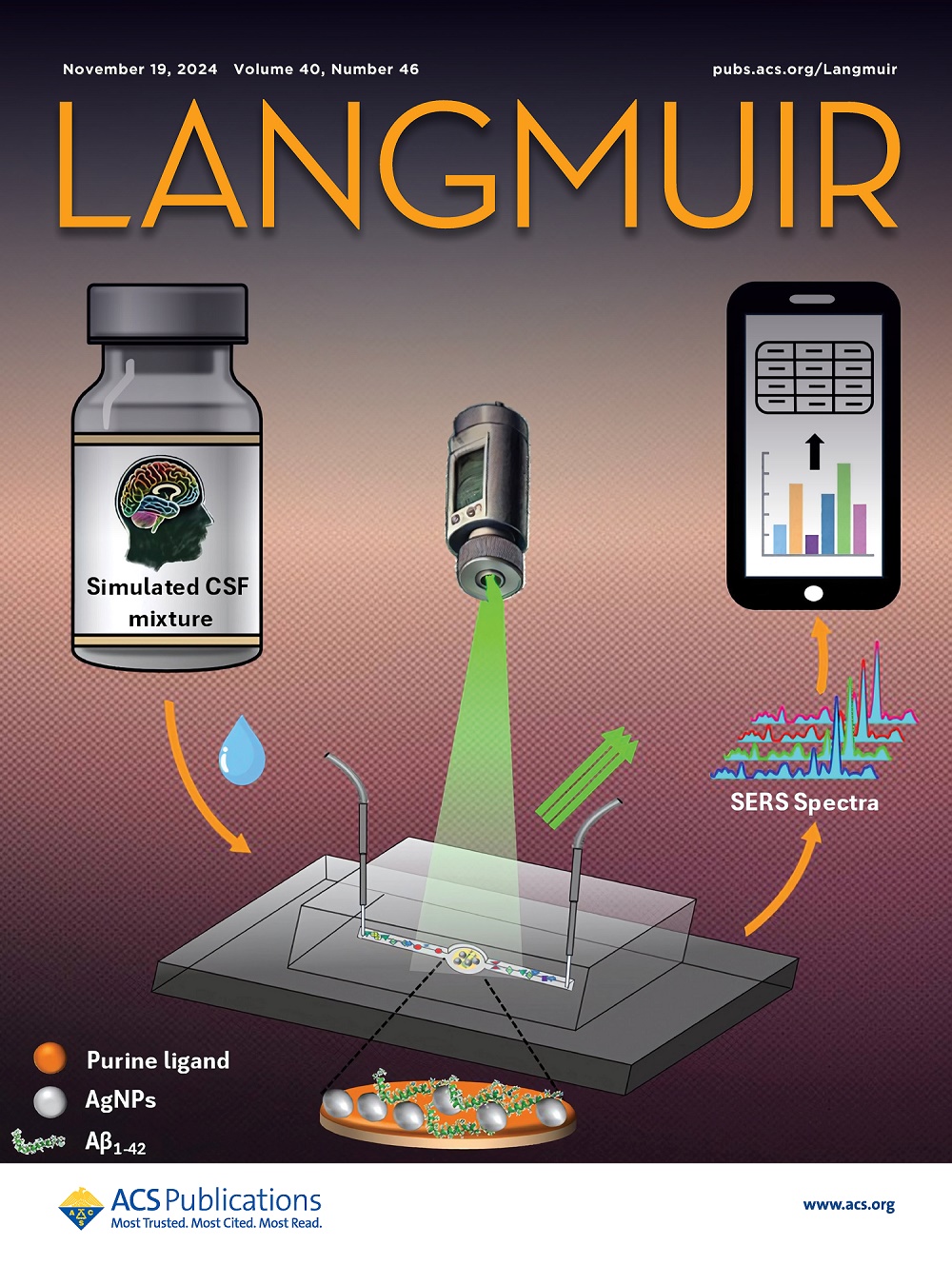基于种子分散聚合的圆盘状聚合物颗粒的制备:在多种条件下获得的多空心颗粒。
IF 3.9
2区 化学
Q2 CHEMISTRY, MULTIDISCIPLINARY
引用次数: 0
摘要
之前的实验证明,在有癸烷存在的甲醇/水介质中,以2-乙基己基甲基丙烯酸酯(EHMA)为种子,用振颤器将PS颗粒作为种子,制备盘状聚苯乙烯(PS)颗粒,然后去除PEHMA和癸烷,但仅在限制条件下。此外,透射电子显微镜(TEM)未对圆盘状颗粒进行结构可视化。在这项工作中,我们使用传统的磁性搅拌装置重新研究了这种合成方法,大大拓宽了可行条件的范围(即甲醇/水的质量比为10/0-5/5,搅拌速度为80-360转/分,聚合时间为2-24小时)。系统研究表明,即使使用更小的PS种子颗粒(>730 nm)或替代碳氢化合物(例如十六烷)也可以实现圆盘状形态。至关重要的是,我们首次认识到这些圆盘状颗粒表现出具有区隔空隙(50-300 nm)的多空心结构,这是在聚合过程中PS和癸烷之间的相分离以及随后的癸烷去除过程中形成的。基于实验证据,提出了这种独特结构的机理。这项工作有望为制备具有圆盘状和多空心结构的聚合物颗粒提供有用的见解。本文章由计算机程序翻译,如有差异,请以英文原文为准。
Revisiting the Preparation of Disc-Like Polymer Particles Based on Seeded Dispersion Polymerization: Multihollow Particles Achieved over a Wide Range of Conditions.
The preparation of disc-like polystyrene (PS) particles via seeded dispersion polymerization of 2-ethylhexyl methacrylate (EHMA) was previously demonstrated using a shaker with the PS particles as seeds in methanol/water medium in the presence of decane and subsequent removal of PEHMA and decane, but only under restrictive conditions. Moreover, no structural visualization of the disc-like particles by transmission electron microscope (TEM) was conducted. In this work, we revisit this synthesis using a conventional magnetic stirring apparatus, significantly broadening the range of feasible conditions (i.e., methanol/water mass ratios of 10/0-5/5, stirring rates of 80-360 rpm, and polymerization times of 2-24 h). Systematic studies reveal that disc-like morphology can be achieved even with smaller PS seed particles (>730 nm) or alternative hydrocarbons (e.g., hexadecane). Crucially, we recognize for the first time that these disc-like particles exhibit a multihollow structure with compartmentalized voids (50-300 nm), formed via phase separation between PS and decane during polymerization and subsequent decane removal. A mechanism for this unique structure is proposed based on experimental evidence. This work is expected to provide useful insights into the preparation of polymer particles with both disc-like shape and multihollow structure.
求助全文
通过发布文献求助,成功后即可免费获取论文全文。
去求助
来源期刊

Langmuir
化学-材料科学:综合
CiteScore
6.50
自引率
10.30%
发文量
1464
审稿时长
2.1 months
期刊介绍:
Langmuir is an interdisciplinary journal publishing articles in the following subject categories:
Colloids: surfactants and self-assembly, dispersions, emulsions, foams
Interfaces: adsorption, reactions, films, forces
Biological Interfaces: biocolloids, biomolecular and biomimetic materials
Materials: nano- and mesostructured materials, polymers, gels, liquid crystals
Electrochemistry: interfacial charge transfer, charge transport, electrocatalysis, electrokinetic phenomena, bioelectrochemistry
Devices and Applications: sensors, fluidics, patterning, catalysis, photonic crystals
However, when high-impact, original work is submitted that does not fit within the above categories, decisions to accept or decline such papers will be based on one criteria: What Would Irving Do?
Langmuir ranks #2 in citations out of 136 journals in the category of Physical Chemistry with 113,157 total citations. The journal received an Impact Factor of 4.384*.
This journal is also indexed in the categories of Materials Science (ranked #1) and Multidisciplinary Chemistry (ranked #5).
 求助内容:
求助内容: 应助结果提醒方式:
应助结果提醒方式:


